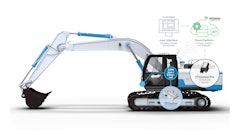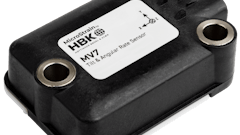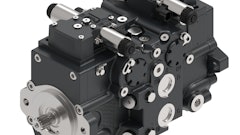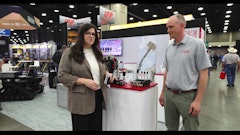With the off-highway industry virtually surrounded by Tier 3 deadlines, compression-ignition engine suppliers are busy finalizing the tests and paper work to prove their engines meet upcoming regulations and are ready for installation in new equipment.
Much has been written about the engine systems that are being employed to meet the regulations; we talked with Rick Bishop and Steve Ephraim, tasked with emission compliance for John Deere Power Systems, to find out what happens between the time engine development work is finalized and they are officially declared "certified."
Recent offerings
John Deere Power Systems (JDPS) recently announced that its PowerTech E 4.5L and 6.8L engines have been Tier 3 certified by the Environmental Protection Agency (EPA), joining the four PowerTech Plus engine models. In addition to Tier 3 certification, the engines have also been given Stage III A certification by the European Union.
The PowerTech E 4.5L engine features a power range of 115–140 hp, and the PowerTech E 6.8L engine features a power range of 140–200 hp.
PowerTech Plus engines feature cooled EGR, a variable geometry turbocharger, a state-of-the-art engine control unit, and an electronic unit injector fuel system (13.5L) or a high-pressure common-rail fuel system (4.5L, 6.8L, 9.0L). PowerTech E engines feature a fixed geometry turbocharger, full-authority electronic controls, and a high-pressure common-rail fuel system (4.5L and 6.8L) or an electronic unit pump fuel system (2.4L, 3.0L).
The PowerTech E 4.5L and 6.8L engines went into full production and began shipping to OEMs in July 2006. Tier 3 regulations for 175–750 hp engines, which encompass the PowerTech E 6.8L engine, took effect in January 2006 and are aimed specifically at reducing oxides of nitrogen (NOx) in non-road applications. Tier 3 rules for 100–175 hp engines, which encompass the PowerTech E 4.5L engine, will take effect in January 2007.
Certification process
For JDPS and other engine manufacturers to sell new engines in the United States and Europe, the certification process requires working with three agencies: the EPA, California's Air Resources Board (CARB) and the European Union. The certification process for EPA and California is similar, while Europe is more involved.
For all three groups, engines with similar characteristics are placed into families. "We may have several hundred ratings certified to the non-road standard, and those ratings may be in 40 different families," says Bishop, manager of emission compliance. "When we talk about certification from a testing perspective we run a test and send them data on one engine in the family, the ‘parent engine.'"
According to Bishop, the agencies have agreed on the same parameters to define the family. The engines must have the same kind of aspiration — all of the engines in one family will be turbocharged, for example — and have the same type of fuel system. It is up to the manufacturer to subdivide it further based on other attributes.
With the example of the PowerTech E 4.5 and 6.8 liter engines, "if they are using the same aspiration and the same type of fuel delivery system they can be in the same family," says Bishop. "The cylinder count doesn't really matter. On the other hand, our PowerTech E engines use a different emission compliance strategy than the other PowerTech Plus engines and, even though they may have the same kind of fuel and air system, and would be in a different family."
For U.S. certification, engine manufacturers are allowed to run the test on their own and send the data to EPA and California, whereas in Europe a witnessed test is required. "We select a Technical Service to work with and someone from that Technical Service watches the test. They submit the information on our behalf to the Approval Authority in one of the European Union member states," says Bishop. "That Approval Authority issues the certificate."
The European requirements are a little more involved than those in the United States for a couple of reasons. For one, there is the witness requirement, and, second, Europe requires more information for every engine rating. Europe wants more part numbers and more detailed descriptions of the engines.
While John Deere is required to test only the parent engine of a family, it must supply specifications for all of the other engines in the family. Bishop's team sends pages of data for each rating; EPA and CARB may want to know a dozen key part numbers used on the engine (such as the fuel injection pump, turbocharger) and specifications such as rated speed, power and fuel flow.
In addition to sending the part numbers a technical description of the engine must also be prepared. "The document gives basic information, such as about the fuel system and how it works, and very detailed, confidential information about our control strategies, like what we are doing at certain altitudes with our control algorithm. Considering the entire certification process, this is where the bulk of our energy is spent," says Bishop. "When the test is run it doesn't take long to figure out that X is less than Y.
The actual emissions test exercises the engine over a few points, in a steady-state condition. "We need to make sure the regulator understands how the engine works under a variety of speeds and loads. For the PowerTech Plus engine — our most involved engine from a control strategy standpoint — the technical description is 200 pages."
Both California and EPA have a staff of certification engineers and a given company uses the same certification engineer for the complete non-road product line.
"From a non-road perspective they are pretty knowledgeable," says Bishop. "For the most part the technology used to make off-highway engines comply is the same technology used in on-highway engines several years ago."
For EPA and California, engine manufacturers may run the actual certification test at any lab that complies with federal requirements for the equipment used, how often it is calibrated, etc. While JDPS's in-house laboratories can legally perform the work, it elects to send its engines to Southwest Research Institute (SWRI) for emissions compliance testing. "We do all of the development work in-house," says Bishop, "but our labs are so busy with that work that the certification tests are outsourced."
When an engine arrives at SWRI, the actual test doesn't take long. There shouldn't be any surprises at this point. "A number of development tests will have already determined the right software and hardware for the engine," says Bishop. "All of the numbers are known by the time we build an engine and have it run at the lab. We'll run enough break-in hours on it to ensure the engine's performance has stabilized (from 20 to 50 hours). The actual emissions test can be done in less than a day — running the emission test is a small part of the total effort involved."
Once the compliance tests are completed and the paperwork is sent off to the proper government agency, a check must also be mailed.
"Whatever agency we're working with has a certificate charge, which varies by category," says Ephraim. "For non-road compression ignition engines, EPA's fee is about $1,800 this year. It goes up around $40 dollars a year. The marine fee is about $840, while the on-highway fee is a little over $29,000 this year. These fees are per family, and must be renewed annually."
JDPS utilizes UK-based Vehicle Certification Agency (VCA) to certify its engines for Europe. It has two sets of fees, one for issuing the certification and one for the time and travel for their representative to witness the test.
"We are talking about just the fees that we have to pay to an agency to have the certification done," says Bishop. "Add to that the cost of acquiring the certification engine to test and running the necessary emission tests. After the test engine performs its role, it is kept in storage in the event there is ever a question by one of the agencies that requires the engine to be tested again."
As long as no major design changes are made to the engine, it does not have to be retested for its annual recertification.
The certificate
EPA calls it a Certificate of Conformity, while CARB issues an Executive Order. In Europe it is called a Type Approval certificate. Each is essentially the same type of document — it proves that the agency has looked over the data and are satisfied it complies with the standard.
EPA has an informal goal of turning around an application in 60 days. California waits until EPA issues its Certificate of Conformity before California issues an Executive Order; if EPA is running late, so does California. In Europe each Technical Service is in competition with each other. One of their selling points is how quickly they turn around Type Approval certificates. They're sent out in a week or two.
The OEM just wants to know the engine they are buying is certified to the latest emissions standard, and typically does not require a copy of the actual certificate. The emissions label provides all of the information they might need.
"California and other areas have incentive programs to encourage the early introduction of the next tier of engine," says Bishop. "Some of those programs rely on physically seeing the certificate and making sure it exists; because of that California posts the Executive Orders on its website."
John Deere does have its certificates posted on its internal website, says Ephraim, where customers can see the documents.
![Hcm Ax Landcros Press Release[32] jpg](https://img.oemoffhighway.com/mindful/acbm/workspaces/default/uploads/2025/11/hcmaxlandcros-press-release32jpg.mAEgsolr89.jpg?auto=format%2Ccompress&fit=crop&h=100&q=70&w=100)
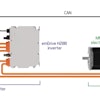
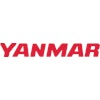
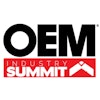
![Hcm Ax Landcros Press Release[32] jpg](https://img.oemoffhighway.com/mindful/acbm/workspaces/default/uploads/2025/11/hcmaxlandcros-press-release32jpg.mAEgsolr89.jpg?ar=16%3A9&auto=format%2Ccompress&fit=crop&h=135&q=70&w=240)




